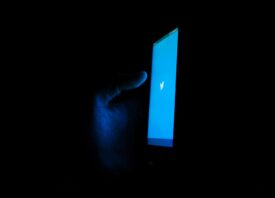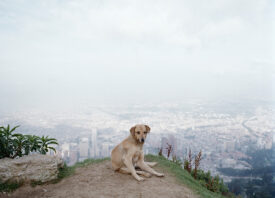Search this site
How Philly’s Historic Rowhomes Became an NFT Sensation


In some ways, Chris Hytha was working against the clock. After he graduated with a degree in architecture, the artist threw himself into a new project: photographing Philadephia’s historic rowhomes. He spent countless hours exploring Google Earth for hidden gems, but even once he found one, there was no guarantee that it would be there when he actually visited. The images on Google Earth might be a year old, and a lot can happen in a year. Once, he found a building he loved in West Philadephia, but when he got to the location, all that remained was an empty lot.
In total, the completed project comprises one hundred photographs, each representing a unique rowhome. “I would be interested to drive around Philly again in a year or two and just keep tabs, making sure the homes are still there, and see if any are gone. It would be interesting to know that the photos would somehow preserve them, even if they disappear.”
I can’t help but be reminded of Bernd Becher and Hilla Becher, who started documenting Germany’s changing industrial landscape more than sixty years ago. Like their widely influential architectural studies, Hytha’s rowhomes are typologies: all the buildings have been photographed head-on in similar lighting conditions (the artist prefers even, overcast days). But there is something decidedly modern about Rowhomes: Hytha has minted them as NFTs, or non-fungible tokens, on the Ethereum blockchain.
Hytha’s goal of creating a lasting heritage for beautiful yet overlooked structures is, perhaps, particularly well-suited to blockchain technology. The idea at the heart of NFTs, after all, is to create an immutable provenance for works of digital art. The houses themselves might be gone one year or fifty years down the road, but there’s something poetic about the prospect that the history and ownership of these images will remain on the blockchain as part of a permanent and publicly accessible record.
These photographs represent a larger heritage, closely tied to the city’s history. It’s worth noting that while some of the rowhomes have been abandoned, others have been well-maintained over the years. “I was looking character more than anything else,” Hytha says. “I looked for buildings that told a story, and I was particularly interested in those that had become kind of a patchwork. For example, in some of these buildings, dating back to the 1920s, you’ll find original elements, but then there are also elements that have been added or covered up with siding, you know, from the 70s.”
In North Philadelphia, in particular, he found buildings that had come with the factories; the workers’ homes would be clustered around the factories themselves, while those in management would occupy the fancier houses along the periphery. “Philly used to be called the workshop of the world, and deindustrialization hit it hard,” the artist says. “Everything was manufactured here, from cars to textiles.
“And then all of a sudden, it all got shut down because it was cheaper to do it overseas. That history is why a lot of these homes that used to be beautiful and used to be well-kept are now in disrepair. Even though that was thirty, forty, fifty years ago, the scars of what deindustrialization did are still there.”
Still, Hytha stresses that Rowhomes is a project about beauty, not sorrow. “Sometimes, it’s misinterpreted, and people say, ‘Oh, what a shame that these neighborhoods are deteriorating,’” he admits. “And that’s definitely a part of it. That’s something that can’t be denied. But the intent of the project isn’t to show the sadness of these neighborhoods. It’s really to show and celebrate this nugget of beauty. I want the project to be optimistic. I love this city so, so much.”
It’s safe to say that most people understand his intention here, and they recognize the photographs for all that they represent. As of this writing, the floor price for the collection is 4 ETH, or $11,186.16. Rowhome #1, the first in the series, last sold for 15 ETH, or $41,948.10 (again, as of this writing). Hytha credits the popularity of the series, at least in part, to the unique features of the homes themselves. While all the images go together, each is one-of-a-kind.
“In the collecting space, there’s this kind of a mantra where people say, ‘looks rare,’” the artist elaborates. “This comes from the early crypto art projects like CryptoPunks or Bored Ape Yacht Club, where all the characters have specific traits. For example, maybe there will be only 100 out of the 10,000 that have a trait, and that trait will correlate to higher prices.
“I’m in a different space, but I think that kind of thinking carries over. So there’s usually increased interest in a house where something is different. It could be a house that’s shot at nighttime instead of daytime, or I have a couple that were shot in the snow. Then there’s a group of them that have cars in front of them.”
With that being said, the reasons one work jumps out over another will be personal to every collector. “I know one fellow photographer, who is also a collector of the project, grew up in South Philadelphia,” Hytha says. “He picked a home that reminded him of the home where he grew up. So there’s kind of another level of personal connection too.”
Hytha didn’t meet any of the current rowhome owners, though he always half expected he would. He did, however, encounter people along the way, as he made his way from one house to the next. “Rowhome #65, which is probably my favorite, was entirely covered in ivy,” he remembers. In some ways, that picture represents so much of what he wanted to capture: the magic that remains a the heart of a city that’s suffered and survived.

“While there, I got to chat with the neighbors for a little bit–a mom and an older son–and they told me the story,” he tells me now. “The mom remembered that someone used to live there, but that was about twenty years ago. Since then, it had been unoccupied, with this ivy just growing over it. I got the vibe that, even for the neighbors, there was just a charm to this house. An abandoned home could have felt depressing, but this one just had this romantic feel.”
In the final picture, you can see birds flying overhead. As of this writing, Rowhome #65 is available on OpenSea. You can own it for 10 ETH.








All images © Chris Hytha



